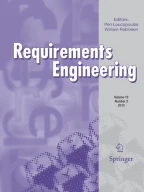UML has become the
de facto standard for object-oriented modelling. Currently, UML comprises several different notations with no formal semantics attached to the individual diagrams or their integration, thus preventing rigorous analysis of the diagrams. Previously, we developed a formalisation framework that attaches formal semantics to a subset of UML diagrams used to model embedded systems. This paper describes automated structural and behavioural analyses applicable to UML diagrams using our formalisation framework. In addition to intra- and inter-diagram consistency checks, we discuss how simulation and model checking can be used in tandem for behavioural analysis of the UML diagrams. Our tools also visually interpret the analysis results in terms of the original UML diagrams, thereby facilitating their correction and refinement. We illustrate these capabilities through the modelling and analysis of UML diagrams for an automotive industrial case study.
Similar content being viewed by others
Author information
Authors and Affiliations
Additional information
Correspondence and offprint requests to: Dr B. Cheng, Software Engineering and Network Systems Laboratory, Department of Computer Science and Engineering, Michigan State University, 3115 Engineering Building, East Lansing, MI 48824, USA. Tel.: +1 517 355 8344; Fax: +1 517 432 1061; Email: chengb@cse.msu.edu
Rights and permissions
About this article
Cite this article
Campbell, L., Cheng, B., McUmber, W. et al. Automatically Detecting and Visualising Errors in UML Diagrams . Requirements Eng 7, 264–287 (2002). https://doi.org/10.1007/s007660200020
Issue Date:
DOI: https://doi.org/10.1007/s007660200020
